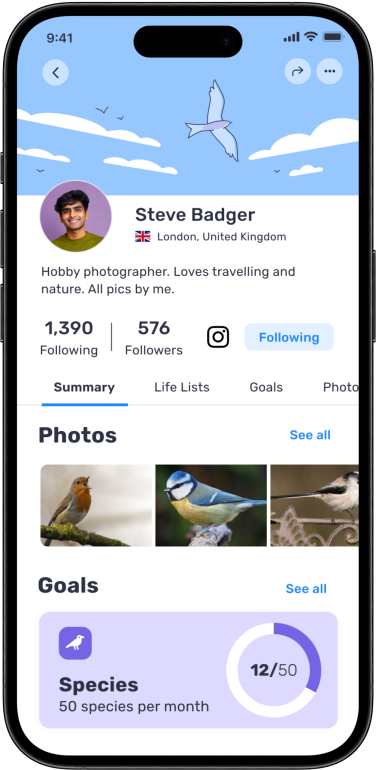loading...
Rails, Crakes & Coots
Rails, or Rallidae, are a diverse family of small to medium-sized birds found worldwide, except for Antarctica, deserts, polar regions, and high mountains. This family includes species like crakes, coots, and gallinules, many of which favor wetlands but can be found in various terrestrial habitats. Rails have evolved a remarkable range, from 12 to 63 cm in length, with some species having markedly long necks and laterally compressed bodies. Their bills are particularly varied, some being considerably long, while others are short and broad, and a few species feature a significant frontal shield.
These birds generally have limited sexual size dimorphism and their calls are often loud, aiding communication through dense vegetation. Rails typically exhibit short, rounded wings and although they're not powerful fliers, many can sustain long flights during migration. However, their flight is so weak that it easily leads them off course, which is why they're often found on isolated islands. This propensity for weak flight and even flightlessness is a classic example of parallel evolution, particularly abundant on islands where lack of predators renders the ability to fly unnecessary.
Flightless birds tend to have fewer energy requirements, and this has allowed for the diversification and adaptation of rails to various ecological niches on islands. Unfortunately, many island rail species have gone extinct or are endangered due to human activity and introduction of predators.
Rails typically have a diet that includes invertebrates, fruit, or seedlings, and they are often shy and secretive birds that prefer dense vegetation near water bodies. They usually lay five to 10 eggs, are most often monogamous, and sometimes experience polygyny and polyandry.
Humans have hunted rails for their meat and eggs, and some species like the Guam rail have suffered greatly from introduced species. Conservation efforts continue to try and save those that are endangered. The classification of rails, as evidenced by genetic studies, places them within the larger order of Gruiformes or, in some cases, their own order of Ralliformes. The family is scientifically recognized as having been described by Constantine Samuel Rafinesque in 1815 and contains numerous genera and species, with a rich fossil record extending into the Eocene. Some species and genera have recently become extinct due to human impact.
Overall, the Rallidae family is characterized by their adaptability and the remarkable cases of flightlessness seen among island species. Conservation efforts remain crucial to protect the existing diversity within this family of birds.
Regions
Categories
All
Accentors
African & New World Parrots
Albatrosses
Auks
Austral Storm Petrels
Barn Owls
Bee-eaters
Bulbuls
Buntings
Bustards
Caracaras, Falcons
Cardinals & Allies
Chats, Old World Flycatchers
Cisticolas & Allies
Cockatoos
Cormorants, Shags
Coursers, Pratincoles
Cranes
Crows, Jays
Cuckoos
Ducks, Geese, Swans
Figbirds, Orioles, Turnagra
Finches, Euphonias
Flamingos
Frigatebirds
Gannets, Boobies
Goldcrests, Kinglets
Grassbirds & Allies
Grebes
Guineafowl
Gulls, Terns, Skimmers
Herons, Bitterns
Hoopoes
Hummingbirds
Ibises, Spoonbills
Indigobirds, Whydahs
Jacanas
Kingfishers
Kites, Hawks, Eagles
Larks
Laughingthrushes & Allies
Leaf Warblers & Allies
Longspurs, Snow Buntings
Loons
Mockingbirds, Thrashers
New World Sparrows
New World Vultures
New World Warblers
Nightjars
Northern Storm Petrels
Nuthatches
Old World Parrots
Old World Sparrows, Snowfinches
Oropendolas, Orioles, Blackbirds
Ospreys
Owls
Oystercatchers
Pelicans
Penduline Tits
Penguins
Petrels, Shearwaters, Diving Petrels
Pheasants & Allies
Pigeons, Doves
Plovers
Rails, Crakes & Coots
Reed Warblers & Allies
Rollers
Sandgrouse
Sandpipers, Snipes
Sheathbills
Shrikes
Skuas
Starlings, Rhabdornis
Stilts, Avocets
Stone-curlews, Thick-knees
Storks
Swallows, Martins
Swifts
Sylviid Babblers
Tanagers & Allies
Thrushes
Tits, Chickadees
Treecreepers
Tropicbirds
Tyrant Flycatchers, Calyptura
Vireos, Greenlets, Shrike-babblers
Wagtails, Pipits
Waxbills, Munias & Allies
Waxwings
Weavers, Widowbirds
Woodpeckers
Wrens
Yellow-breasted Chat

African Crake
Crecopsis egregia

Allen's Gallinule
Porphyrio alleni

American Coot
Fulica americana

American Purple Gallinule
Porphyrio martinica

Baillon's Crake
Zapornia pusilla

Black Rail
Laterallus jamaicensis

Clapper Rail
Rallus crepitans

Common Gallinule
Gallinula galeata

Coot
Fulica atra

Corncrake
Crex crex
Gough Moorhen
Gallinula comeri

Grey-headed Swamphen
Porphyrio poliocephalus
Inaccessible Island Rail
Laterallus rogersi

Lesser Moorhen
Paragallinula angulata

Little Crake
Zapornia parva

Moorhen
Gallinula chloropus
Paint-billed Crake
Neocrex erythrops
Red-gartered Coot
Fulica armillata

Red-knobbed Coot
Fulica cristata

Sora Rail
Porzana carolina

Spotted Crake
Porzana porzana

Virginia Rail
Rallus limicola

Water Rail
Rallus aquaticus

Western Swamphen
Porphyrio porphyrio
Yellow Rail
Coturnicops noveboracensis
Your birdwatching journey like never before
Connect with nature in minutes
Take a walk, look out of the window and log the birds that you see. Feel good about those little connections to nature.
Discover the joy of birding
Find new birding spots, see more birds, share and celebrate with a like-minded community of nature lovers.
Play your part in saving nature
Logging your birding sightings and sessions turns into positive action for our planet. Every sighting counts.
Species Categories
AccentorsAfrican & New World ParrotsAlbatrossesAuksAustral Storm PetrelsBarn OwlsBee-eatersBulbulsBuntingsBustardsCaracaras, FalconsCardinals & AlliesChats, Old World FlycatchersCisticolas & AlliesCockatoosCormorants, ShagsCoursers, PratincolesCranesCrows, JaysCuckoosDucks, Geese, SwansFigbirds, Orioles, TurnagraFinches, EuphoniasFlamingosFrigatebirdsGannets, BoobiesGoldcrests, KingletsGrassbirds & AlliesGrebesGuineafowlGulls, Terns, SkimmersHerons, BitternsHoopoesHummingbirdsIbises, SpoonbillsIndigobirds, WhydahsJacanasKingfishersKites, Hawks, EaglesLarksLaughingthrushes & AlliesLeaf Warblers & AlliesLongspurs, Snow BuntingsLoonsMockingbirds, ThrashersNew World SparrowsNew World VulturesNew World WarblersNightjarsNorthern Storm PetrelsNuthatchesOld World ParrotsOld World Sparrows, SnowfinchesOropendolas, Orioles, BlackbirdsOspreysOwlsOystercatchersPelicansPenduline TitsPenguinsPetrels, Shearwaters, Diving PetrelsPheasants & AlliesPigeons, DovesPloversRails, Crakes & CootsReed Warblers & AlliesRollersSandgrouseSandpipers, SnipesSheathbillsShrikesSkuasStarlings, RhabdornisStilts, AvocetsStone-curlews, Thick-kneesStorksSwallows, MartinsSwiftsSylviid BabblersTanagers & AlliesThrushesTits, ChickadeesTreecreepersTropicbirdsTyrant Flycatchers, CalypturaVireos, Greenlets, Shrike-babblersWagtails, PipitsWaxbills, Munias & AlliesWaxwingsWeavers, WidowbirdsWoodpeckersWrensYellow-breasted Chat
Birda Blog
What Our Birders Say
Explore
Work with Birda
Work with Birda
Copyright © 2024 Chirp Birding. All rights reserved.


























